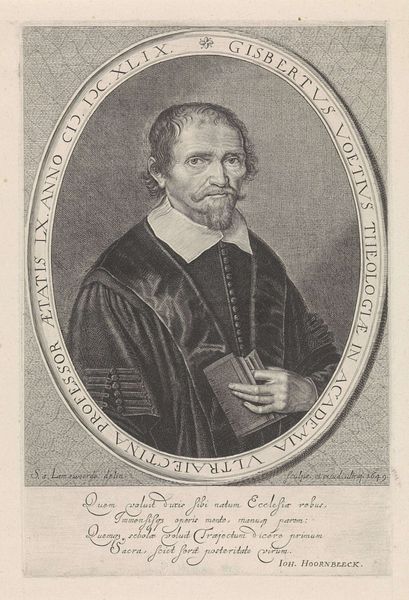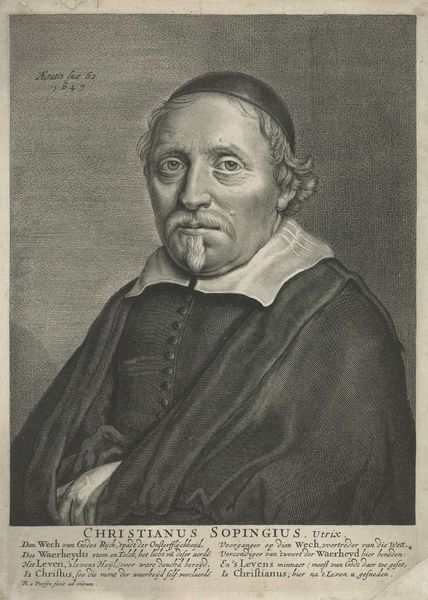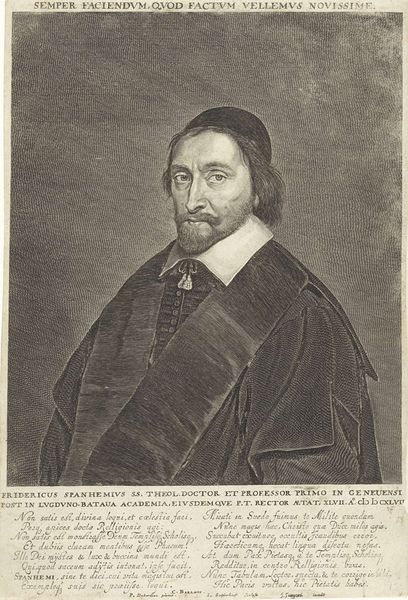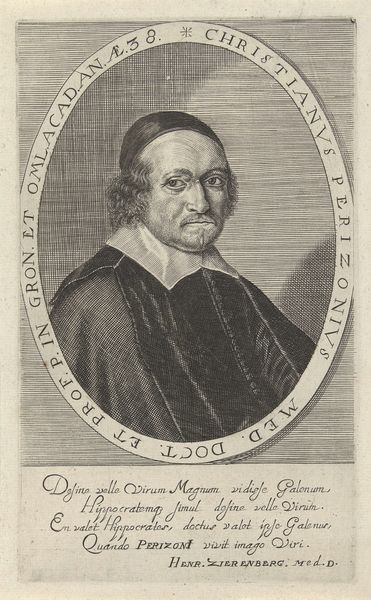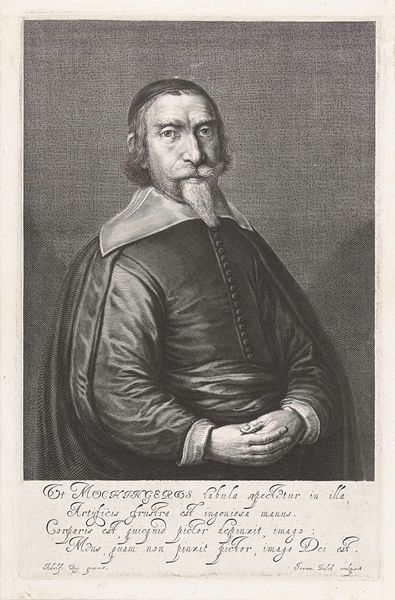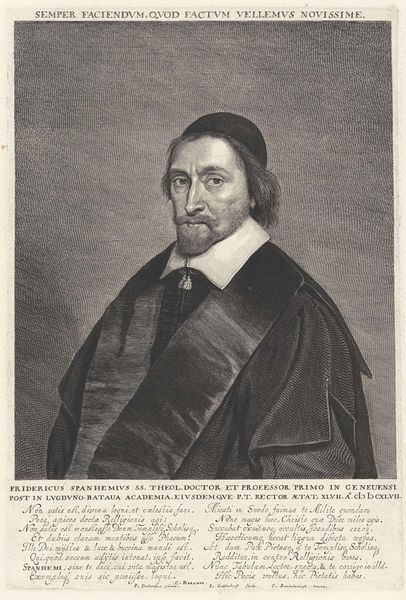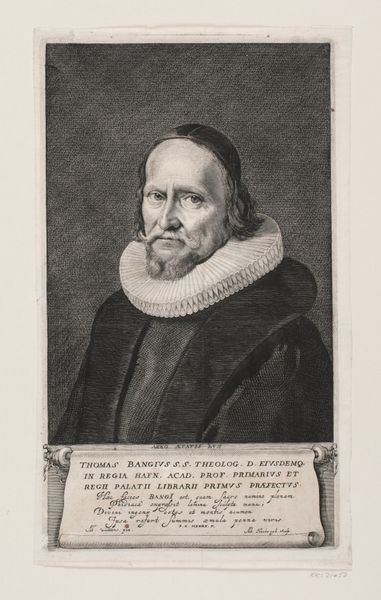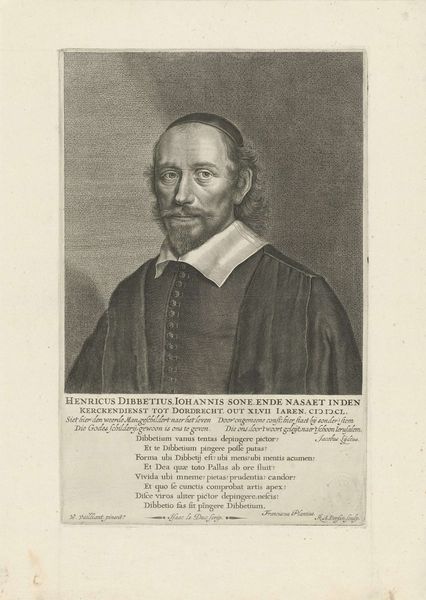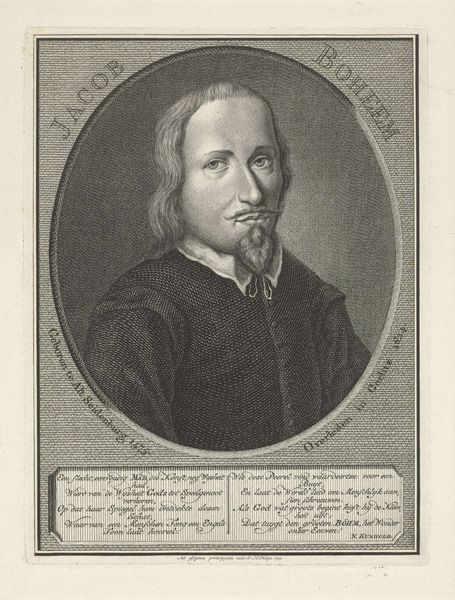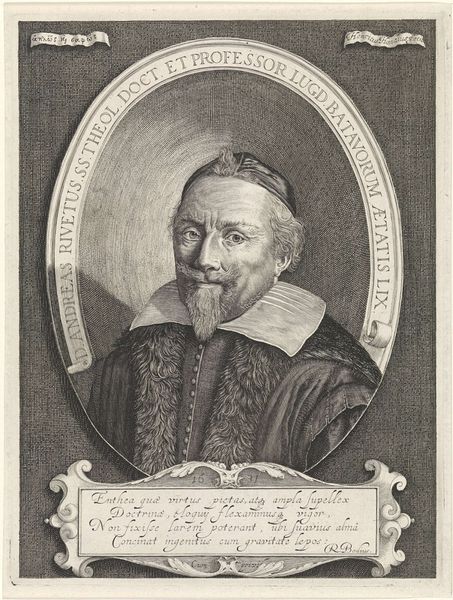
print, engraving
#
portrait
#
baroque
# print
#
old engraving style
#
history-painting
#
engraving
Dimensions: height 302 mm, width 212 mm
Copyright: Rijks Museum: Open Domain
This print depicts Godefroid Hotton, and was made by Abraham J. Conradus in the mid-17th century. It's an engraving, a process of incising lines into a metal plate which then holds ink and transfers the image to paper. The texture of the paper itself contributes to the final image, catching ink in its fibers. Look closely, and you can see the fine, deliberate lines that define Hotton's face, his clothing, and the subtle shading that gives the portrait depth. Engraving was a skilled trade, demanding precision and patience. The act of creating such a detailed likeness was labor-intensive, making the resulting prints valuable commodities. This was a mode of production closely tied to the rise of a mercantile economy, where images could be reproduced and disseminated, contributing to the spread of ideas and the solidification of social identities. Ultimately, understanding this work means appreciating the craft and the social context in which it was produced.
Comments
No comments
Be the first to comment and join the conversation on the ultimate creative platform.
